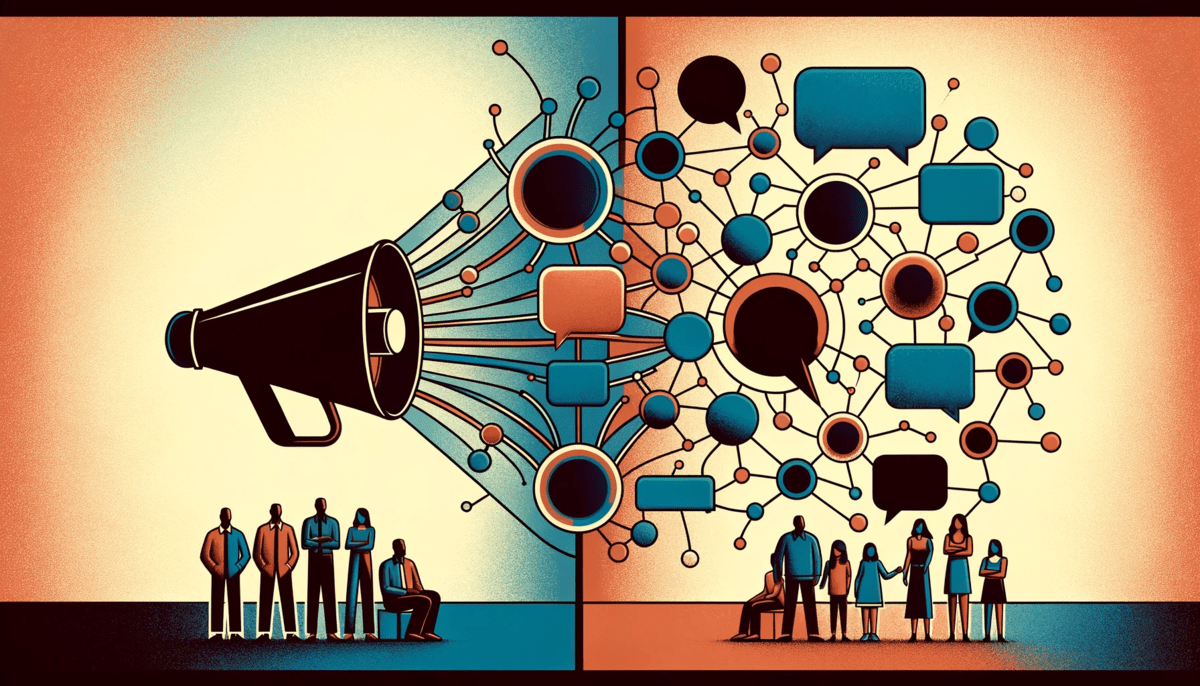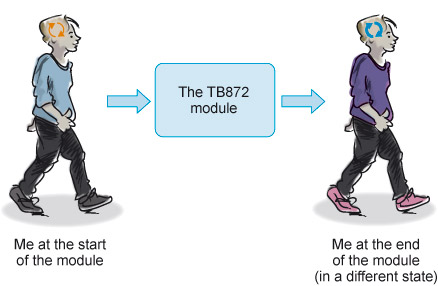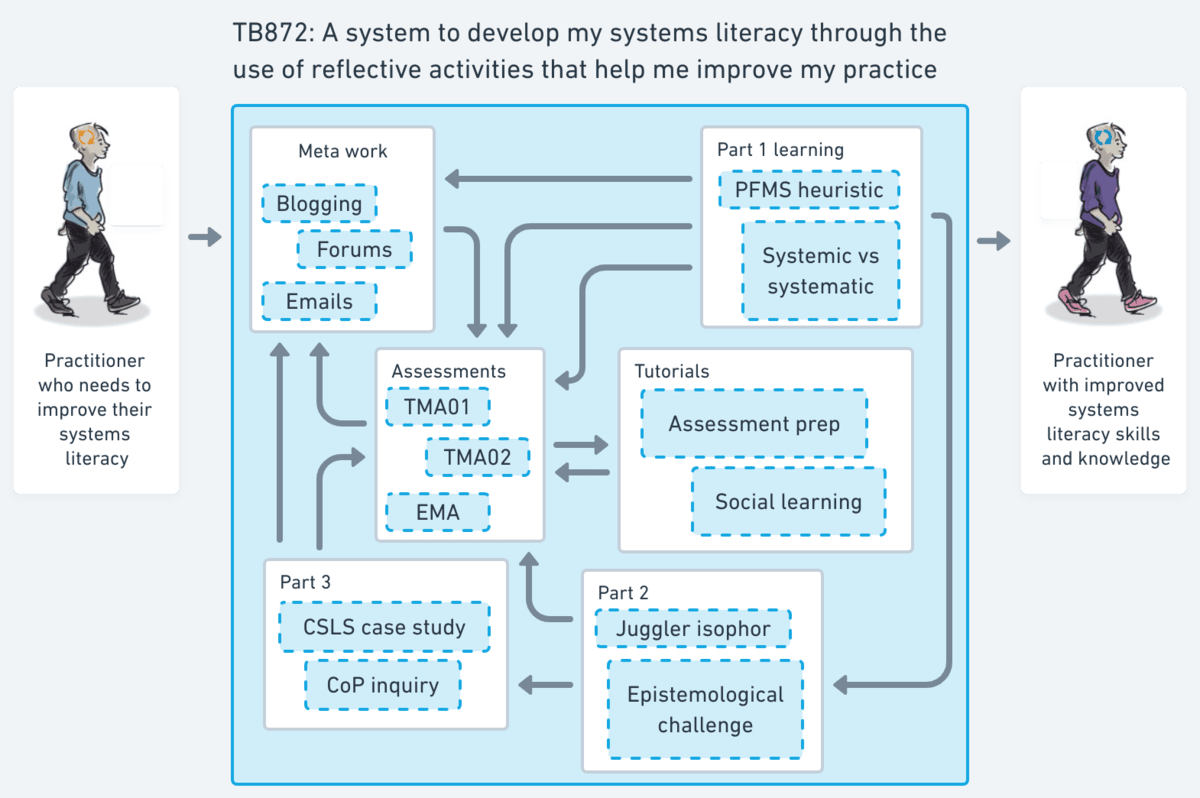TB872: DAD vs EDD
Note: this is a post reflecting on one of the modules of my MSc in Systems Thinking in Practice. You can see all of the related posts in this category.

In the work we do with clients, there is often a tendency to for them to want to decide something on behalf of a group they serve. This is usually done with good intentions: people within organisations have expertise, can move relatively quickly, and are aware of any restrictions around funding they have for a project.
To use an example which I’ll keep anonymous, during the pandemic there was funding available to help young people who were isolated due to lockdowns. One organisation I spoke with ‘knew’ exactly what was needed, started implementing a digital solution, and were surprised when very few people used it.
The acronym DAD (decide-announce-defend) describes this approach, where an individual or organisation decides on something, announces it to stakeholders, and then has to defend the decision when things don’t go to plan. Although it may seem speedier to decide things behind closed doors and then get on and implement things, if stakeholders are resistant then the overall implementation can be delayed or even stopped entirely.
It might be that what is proposed is fantastic and exactly what is required. Or it might be that what is proposed is terrible and does not take account of some key information. Either way, change management involves stakeholder engagement, without which even the best of plans can be thwarted. It’s often actually faster and cheaper, in terms of the overall implementation, to get people involved from the start. It’s just a lot messier.
Note: in the absence of knowing why something is happening, people make up all kinds of stuff. I remember overhearing a conversation among retirees in a coffee shop about technology which took on an almost mystical flavour; because they didn’t know why some things happened, they’d invented all kinds of conspiracy theories!
Another approach, which is the one that WAO usually champions, can initially take longer. Sometimes, much longer. It involves stakeholder engagement, usually through user research and convening meetings. This takes facilitation skills which draws on both nonviolent communication and creating psychologically-safe environments with consent-based decision making. It’s challenging work in its own right, and so I can understand why technocratic-minded people and organisations seek to skip it. As I often say, it’s harder to work with people than technology.
I’m pleased to now have a name for this approach: EDD (engage-deliberate-decide). One of the biggest problems with a DAD approach is that stakeholders don’t understand the why and the how of the situation, as they have not been consulted. In the example given in the course materials, the UK’s Environment Agency worked behind closed doors to figure out a plan for a town at risk of flooding from the sea. When the plan is presented to the people of the town as a fait accompli, they only see the negative impacts of the flood defences. Unlike the staff who have worked on the plan, the townspeople have not engaged with the risks or options for prevention and mitigation.
Contrast that with the other example given in the course materials, after the Environment Agency learned its lesson and switched from a DAD to an EDD approach when working with another town. In this case, a much more holistic approach meant that the project was successful and seen as beneficial, came in under budget, and proceeded smoothly. In fact, because the liaison group which was established was separate to the Environment Agency, they could go beyond the agency’s brief to increase the system boundary to include all different kinds of flooding.
One thing mentioned in passing which I don’t think should be underestimated is that an EDD approach can lead to stakeholders seeing themselves as active participants in creating a shared future. This is what we mean by ‘civil society’: people and organisations on the ground working together to improve the local situation, rather than technocrats at a distance deciding what is ‘appropriate’ or ‘efficient’.
Let’s compare and contrast DAD and EDD approaches using the PFMS heuristic:
| DAD Approach | EDD Approach | |
|---|---|---|
| Participants | Mainly Environment Agency staff and decision-makers. Limited local involvement. Stakeholders as ‘victims’. | Broad range including Environment Agency staff, local residents, business owners, local authorities, and other stakeholders. Stakeholders as active participants. |
| Frameworks | Top-down decision-making. Consultation as a formality. Rational, technocratic, and ‘efficient’. | Collaborative, inclusive, and transparent process. Emphasis on building trust. Emotions welcome, holistic approach. |
| Methods | Decisions made behind closed doors, followed by public announcement and defence. | Engagement from the outset, deliberation, and collective decision-making. |
| Situation | Flood prevention in Teignmouth with public unaware of the risk, leading to shock and opposition. | Flood prevention in Shaldon with proactive engagement to understand and address local concerns and knowledge. |
Now let’s look at the benefits of DAD vs EDD in this particular situation:
| DAD Approach | EDD Approach | |
|---|---|---|
| Outcome | Resistance and failure to address local concerns effectively. Huge delays to the project. | Effective solution accepted by the community, demonstrating the value of diverse perspectives and a holistic approach. |
| Community Involvement | Minimal to none. Decisions imposed on the community. | High. Community actively involved in the decision-making process. |
| Transparency | Low. Lack of information and communication with the public. | High. Open dialogue and information sharing. |
| Flexibility | Rigid. Sticking to the pre-decided plan despite opposition. | Adaptive. Open to changing plans based on community input and new information. |
| Efficiency | Inefficient in the long term due to opposition and delays. | More efficient overall: initial time investment led to smoother implementation. |
| Trust and Respect | Low. Community suspicious and distrustful of Environment Agency. | Medium to High. Improved trust and respect for Environment Agency, and constructive ways of working established. |
I found working through this example extremely instructive when it comes to my own work. For example, we’ve got some potential work with a client onto which the DAD vs EDD approaches map almost perfectly. They’ve come to us wanting an implementation in a hurry based on limited interaction with stakeholders (DAD), and we’re pushing back against this suggesting starting with finding out what problems actually need to be solved, and to engage their stakeholders (EDD).
Image: DALL-E 3



